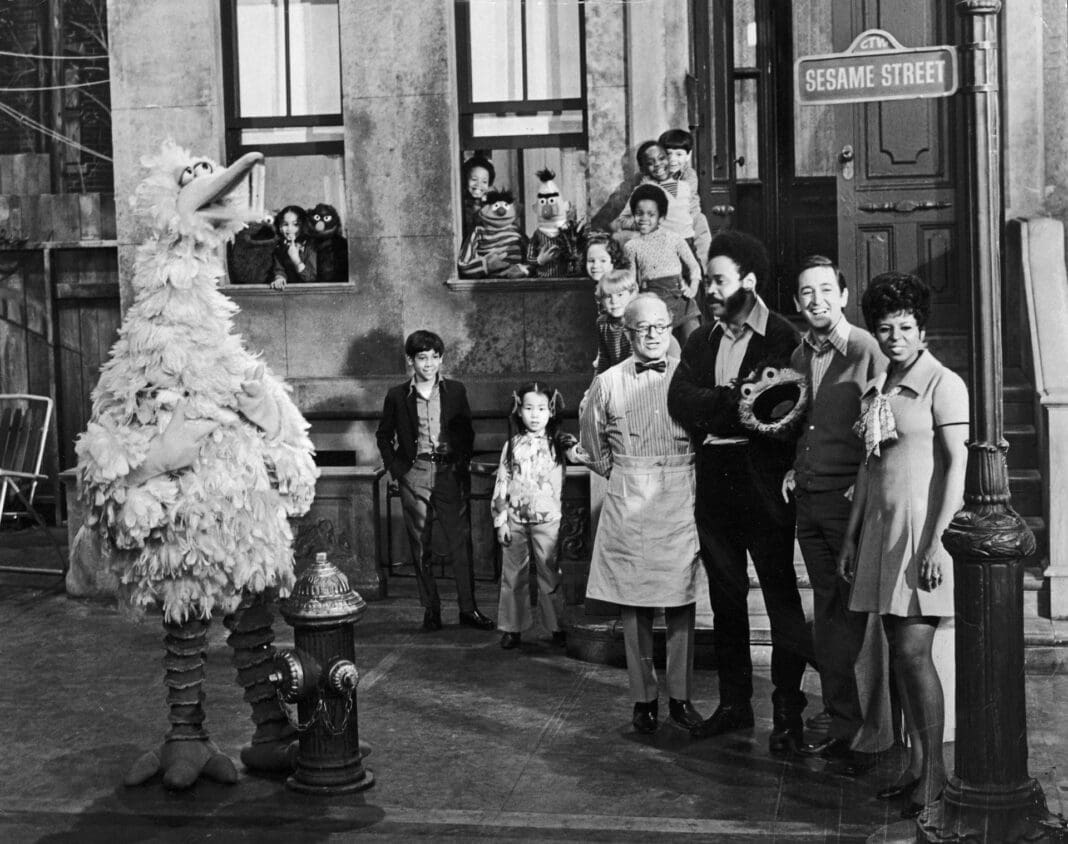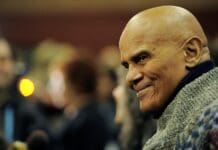The Trump administration’s drive to slash government spending on everything from the arts to cancer research also includes efforts to carry through on the Republican Party’s long-standing goal of ending federal funding for NPR, the nation’s public radio network, and PBS, its television counterpart.
Across the country, 1,500 independent stations affiliated with NPR and PBS air shows such as “Morning Edition,” “Marketplace,” “PBS NewsHour,” “Frontline” and “Nova.” Some 43 million people tune into public radio every week, and over 130 million watch PBS every year, according to the networks.
Public media stations air local news and, when necessary, emergency information. Most also feature regional, national and global coverage of arts and culture. With commercial media divesting from local news reporting, audiences that have long relied on public media to inform their communities are even more dependent now on that service, as are audiences that got their local news from commercial sources.
Public media is also under attack from the Republican majority in Congress and facing scrutiny from the Federal Communications Commission, the government agency that regulates media.
Brendan Carr, whom President Donald Trump appointed to lead the FCC, helped draft Project 2025. That’s the conservative blueprint that Trump distanced himself from during the 2024 campaign but has since embraced.
As proposed in Project 2025, the FCC is examining NPR’s approach to underwriting. Through underwriting, financial support from sponsors is acknowledged on air without asking audiences to form an opinion about a product or make a specific purchase.
The FCC is investigating whether those messages on NPR and PBS “cross the line into prohibited commercial advertisements.”
The top executives of NPR and PBS have denied that their underwriting practices violate any regulations or laws.
At the same time, House Republicans are holding hearings regarding what they say is public media’s “liberal bias.” Their attention is primarily directed at the Corporation for Public Broadcasting, the nonprofit corporation that stewards federal money that Congress appropriates for NPR and PBS.
And in a separate move, Trump demanded that CPB “cancel existing direct funding to the maximum extent allowed by law” and “decline to provide future funding” in an executive order issued on May 1, 2025. Trump’s order accused NPR and PBS of bias in its “portrayal of current events to taxpaying citizens.”
I’m a media historian who wrote a book about the origins of public media in the U.S. and how NPR and PBS contribute to democratic participation. Both networks are designed to provide equal access to information for every listener and viewer.
In my view, as these efforts to investigate and end the funding of public media proceed, it’s worth revisiting why the Corporation for Public Broadcasting was founded in the first place and to understand how it contributes to equal access to information today.
U.S. public media took root in the 1920s, when public universities built radio stations so that rural communities could receive better access to the kind of education available in cities.
The first programs consisted of professors and radio hosts giving lectures about history, finance and other subjects such as cooking, quilting and music appreciation.
Some of those professors believed so strongly in democratic access to media that they built radio stations with their own hands, including one at the University of Wisconsin. In other cases, professors experimented with performing live drama. Ohio State University broadcast the first educational radio Shakespeare performances in the late 1920s.
Many people liked the programming enough to tune in, but the quality of early educational broadcast experiments was inconsistent. Some professors didn’t understand how to talk with audiences and were criticized for their monotone deliveries.
Interest in improving the quality of educational radio grew once radio ownership became more widespread. Over 500 U.S. stations were on the air in 1940. By 1945, when World War II ended, over 95% of families owned radio receivers.
Every listener could take correspondence classes. And educators started to research how to make learning through the radio more compelling and fun.
By the late 1940s, colleges and universities started to pay better attention to making education on the radio both entertaining and informative. They traded their best programs all around the country, through a system they called the “bicycle network.”
Once national distribution was in place, producers of educational radio and TV shows came to an agreement about their best programs through a group called the National Association of Educational Broadcasters. They landed on formulas now associated with NPR and PBS. Home economics instruction evolved into cooking shows. Interviews with professors became public affairs programs.
Radio stations started to combine different kinds of programs that spanned an entire school day. A half-hour children’s comedy show now weaved math, storytelling, music and civics. This format laid some of the groundwork for “Sesame Street.”
In the 1950s a philosophy of public media emerged.
The National Association of Educational Broadcasters’ members believed that everyone should have equal access to education no matter where they lived. They argued that information they presented should be held to rigorous standards, such as fact-checking and even peer review, the academic practice of verifying research validity.
Educational broadcasters aired programs for all kinds of audiences, including in communities not served by commercial media.
To stay focused on their mission, educational broadcasters decided to bar taking money from corporate advertisers. This meant that most money came from state and local governments instead of businesses.
State authorities were able to make public announcements, quickly report emergencies and provide free airtime for political candidates. State lawmakers also thought that these media outlets could help their constituents learn trades at their own pace.
Using broadcasting to provide equal access to education required a lot of new infrastructure.
By the late 1950s the federal government started to fund the construction of radio towers, transmitters and buildings so that every person could access educational programs via broadcasts. President Dwight D. Eisenhower signed a law in 1958 that funded educational access because it could contribute to national defense.
Nearly a decade later, in 1967, President Lyndon B. Johnson signed the Public Broadcasting Act. That law guaranteed a permanent stream of government funding for educational radio and television. Congress had pivoted from “education” to “public” broadcasting as the medium incorporated a wider array of programs, including BBC shows from the U.K.
PBS first went live in 1970, and NPR’s first broadcast aired in 1971.
To buffer NPR and PBS from the influence of political parties and commercial sponsors, the law called for the creation of the Corporation for Public Broadcasting.
In addition to receiving and then disbursing to NPR and PBS the federal funds that Congress appropriates for public media, the CPB provides additional grants to stations across the country. Notably, federal funds help to pay for maintaining equipment and studios where public media programs are taped. That is, most government funding for public media is dedicated to maintaining the technology necessary to continue with its mission to provide equal access.
The rest of the federal money supports the same program development and audience engagement research that started with the National Association of Educational Broadcasters’ “bicycle network.”
The CPB model has succeeded by many measures. About 99% of Americans have access to public media through their television sets, car radios, computers and other devices.
The CPB received $535 million in government funding in the 2025 fiscal year, equal to roughly $1.60 per American. About 70% of that money supports local radio and television stations. Public media costs taxpayers far more elsewhere. A 2022 study found that Germany spends around $142 per person, the U.K. spends $81, and Canada spends over $26 per year.
The U.S. system is also unusual in that the local affiliates are nonprofits that have to pay for the NPR and PBS programs they run. Like the CPB, NPR and PBS are independent nonprofits, not government agencies.
Rather than having the federal government foot the whole bill, in the U.S. public media also relies on $1.3 billion in annual charitable donations from viewers, listeners, corporations and foundations. Of that, public media receives $170 million in underwriting, according to a 2023 report.
But should the federal government end all federal funding for the CPB, their NPR- and PBS-affiliated stations would have more trouble buying, repairing and replacing the transmitters, antennas and websites required to broadcast their programs.
The CPB has already sued the Trump administration over its attempt to oust three of its board members. The CPB asserts that because it is an independent organization and not a federal agency, the federal government can’t dictate who serves on its board. Trump’s executive order could also be challenged in court. And, as is the case with all executive orders, any future administration could rescind it.
Most likely, the original target audience of educational radio − rural communities − would feel the biggest impact if the Trump administration does end federal funding of NPR and PBS. That’s because rural areas have few alternatives now that local journalism has been hit hard by corporate cuts to newsrooms.
Public media’s first century inspired an alternative approach to media other than producing programs that tobacco companies, automakers and other businesses would want to sponsor. How Congress, the FCC and the courts proceed today will influence public media’s reach and practices for the next century.
This article is republished from The Conversation, a nonprofit, independent news organization bringing you facts and trustworthy analysis to help you make sense of our complex world. It was written by: Josh Shepperd, University of Colorado Boulder
Read more: NPR is still expanding the range of what authority sounds like after 50 years Saving the news media means moving beyond the benevolence of billionaires Remote learning isn’t new: Radio instruction in the 1937 polio epidemic
Josh Shepperd is under contract to co-author an update of the history of public broadcasting for Current, public media's trade journal, and the Corporation for Public Broadcasting. Josh is not a paid employee or vendor of either institution. 














